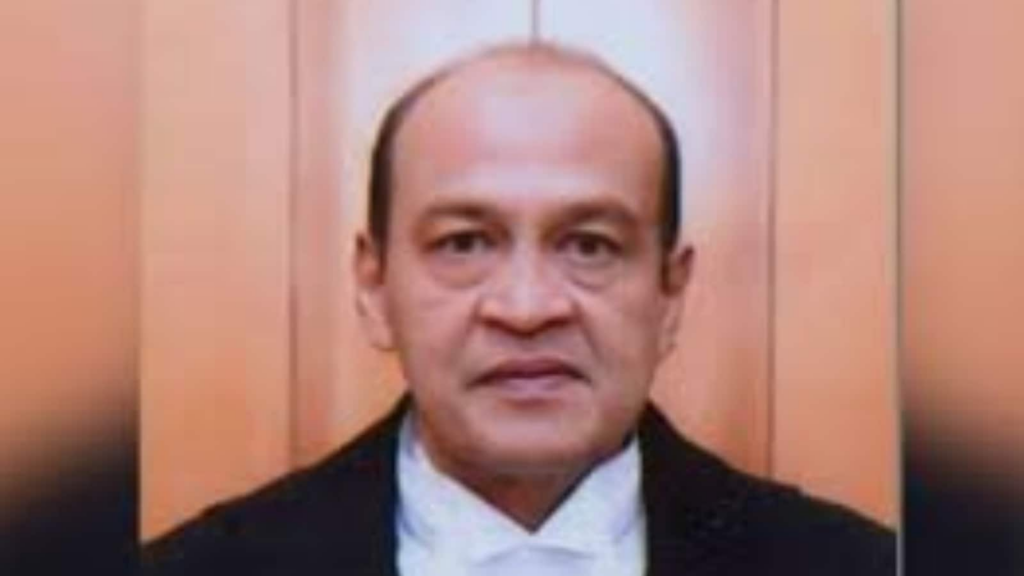AN INQUIRY committee will be set up by the presiding officer of the House concerned to probe charges against Delhi High Court judge Justice Yashwant Varma during the coming Monsoon Session of Parliament. Sources said the timeline for the panel to submit its report will be crunched from three months, so that action against the judge, from whose residence stacks of currency notes were allegedly recovered, is not further delayed.
“Matters related to the judiciary must be beyond politics, so the government has reached out to all the prominent parties and the process (of removal of Justice Varma) would be a unified stand. The government will start collecting the signatures of MPs – after deciding which House should initiate the process – next week,” Parliamentary Affairs Minister Kiren Rijiju said on Thursday.
“The Chair will then constitute a committee as per the Judges Inquiry Act, 1968, and the committee will table the report, following which the discussions will take place,” Rijiju said.
Sources in the government said it is exploring “special provisions to do away with the three-month tenure of the committee”.
Incidentally, sources also indicated that the government was in no hurry over the Opposition’s demand for the removal of Allahabad High Court judge Justice Shekhar Yadav, over a controversial speech made by him at a Vishwa Hindu Parishad event last year.
While admitting that more than 50 Opposition MPs had signed on the papers required to initiate the process for the removal of Justice Yadav, and that their signatures had been verified, a source said the case could not be compared to Justice Varma’s. “There is a stark difference between the charges of corruption and others.”
The Opposition has initiated the move against Justice Yadav in the Rajya Sabha, and Chairman Jagdeep Dhankar is expected to give a ruling on the notice in the Monsoon Session.
Earlier, the government as well as some Opposition parties had also suggested dispensing with a probe committee of the House in the case of Justice Varma since a three-member committee appointed by then Chief Justice of India Sanjiv Khanna had already indicted him. Rijiju said Thursday that the government, however, decided on holding a House probe too. “We would like to go by established rules in this.”
On the Supreme Court panel report, the Union minister said it was in the nature of a “preliminary” probe, that looked into whether the charges were fit enough to be forwarded to the government for action.
The Monsoon Session of Parliament, which was earlier scheduled from July 21 to August 12, has now been extended till August 21. A government official said, “We hope the removal process (of Justice Varma) will be over in this session itself.”
Asked about the extended session, Rijiju said the government has “legislative business to finish” and that it would come out with the agenda soon. An all-party meeting to discuss the business of the government is expected to be held on July 20.
The panel set up by the Supreme Court in the Justice Varma case had submitted its report upholding allegations that wads of currency notes were discovered at his official residence on March 14, by authorities called to the spot due to a fire.
As per the Judges Inquiry Act, 1968, a complaint against a judge requires as a first step a resolution signed by at least 100 members if moved in the Lok Sabha and 50 members if initiated in the Rajya Sabha. Once the MPs submit the motion, the presiding officer of the House can either accept or reject it.
In the case of Justice Varma, the government is yet to decide which House will take up the motion first. But since it is the government initiating the action, and seeking to build political consensus, it is expected that the presiding officer will accept it.
After a motion for removal is adopted by either House, the Speaker / Chairman constitutes a three-member committee of inquiry, headed by the Chief Justice of India or a Supreme Court judge, and including a Chief Justice of any High Court, and a person who is in the opinion of the Speaker/ Chairman, a “distinguished jurist”.
If the committee renders a guilty finding, the report of the committee is then adopted by the House in which it was introduced, and the judge’s removal is debated.
For a removal motion against a Supreme Court or High Court judge to go through, at least two-thirds of those “present and voting” in both the Lok Sabha and Rajya Sabha must vote in favour of removing the judge – and the number of votes in favour must be more than 50% of the “total membership” of each House.
If Parliament passes such a vote, the President eventually signs an order for the removal of the judge.

